Portraits of a Planet: Photographer in Space
Images and videos are selected from NASA-approved events or public domain media.
Presented by Peter A Blacksberg &
David Newman / DNSF
Artful aspects of Earth surrounded by space—presented in gallery exhibitions of
large-scale photographs taken from the International Space Station.
GALLERY EXHIBITIONS
University Gallery, Rochester Institute of Technology – Spring 2018
Center for Imaging Science, Rochester Institute of Technology – Ongoing
Center for Collaborative Arts & Media, Yale University – Fall 2019 to Spring 2020
Charles Krug Gallery, Yountville, California – Summer 2019
Lincoln Theater, Napa, California – Summer 2019
Festival of the Arts, Boca Raton, Florida – Spring 2022
View the Photographs
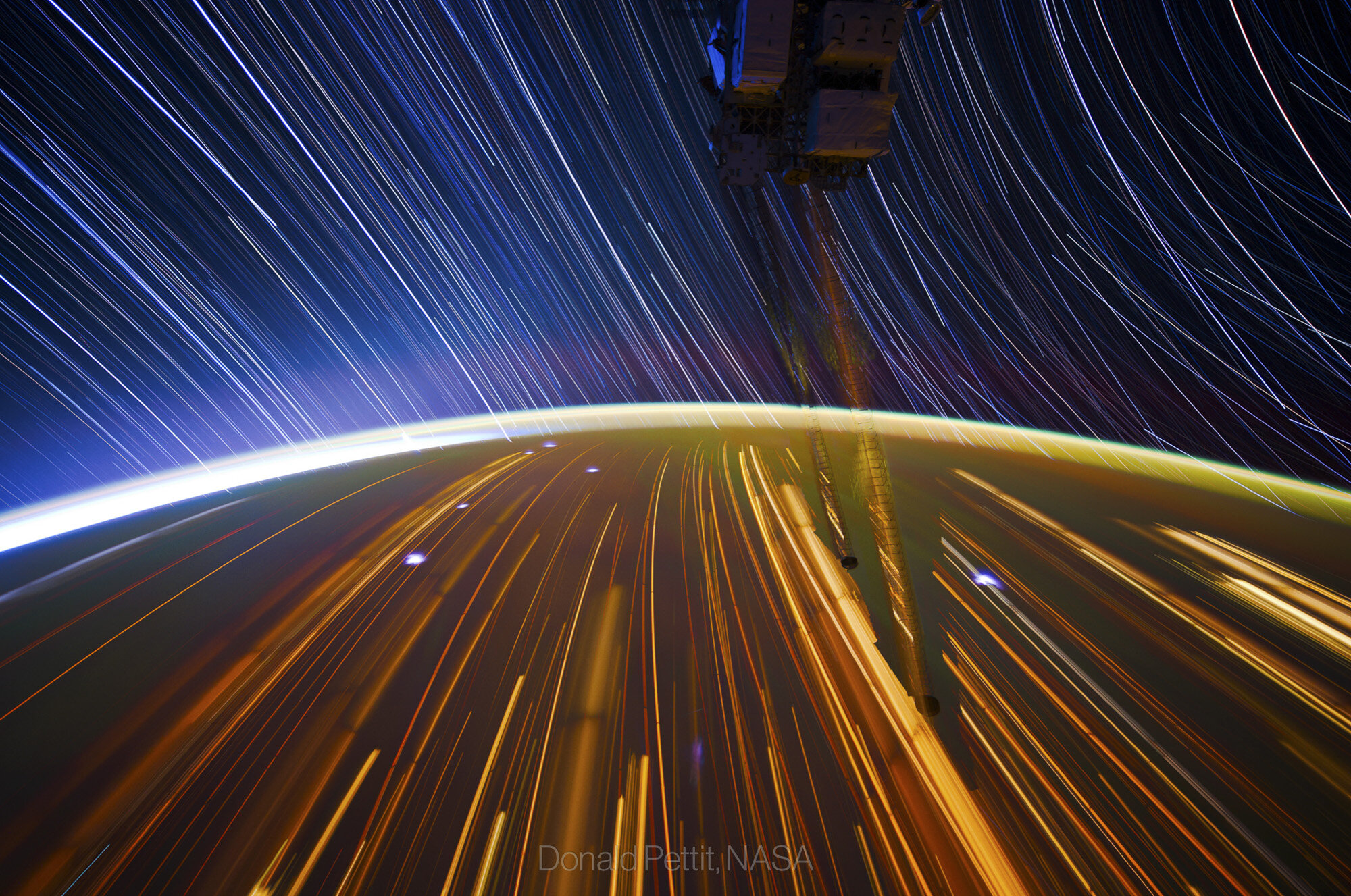
Star trails with city lights, earth horizon, and solar panel. Composite photo, 30 min. exposure.
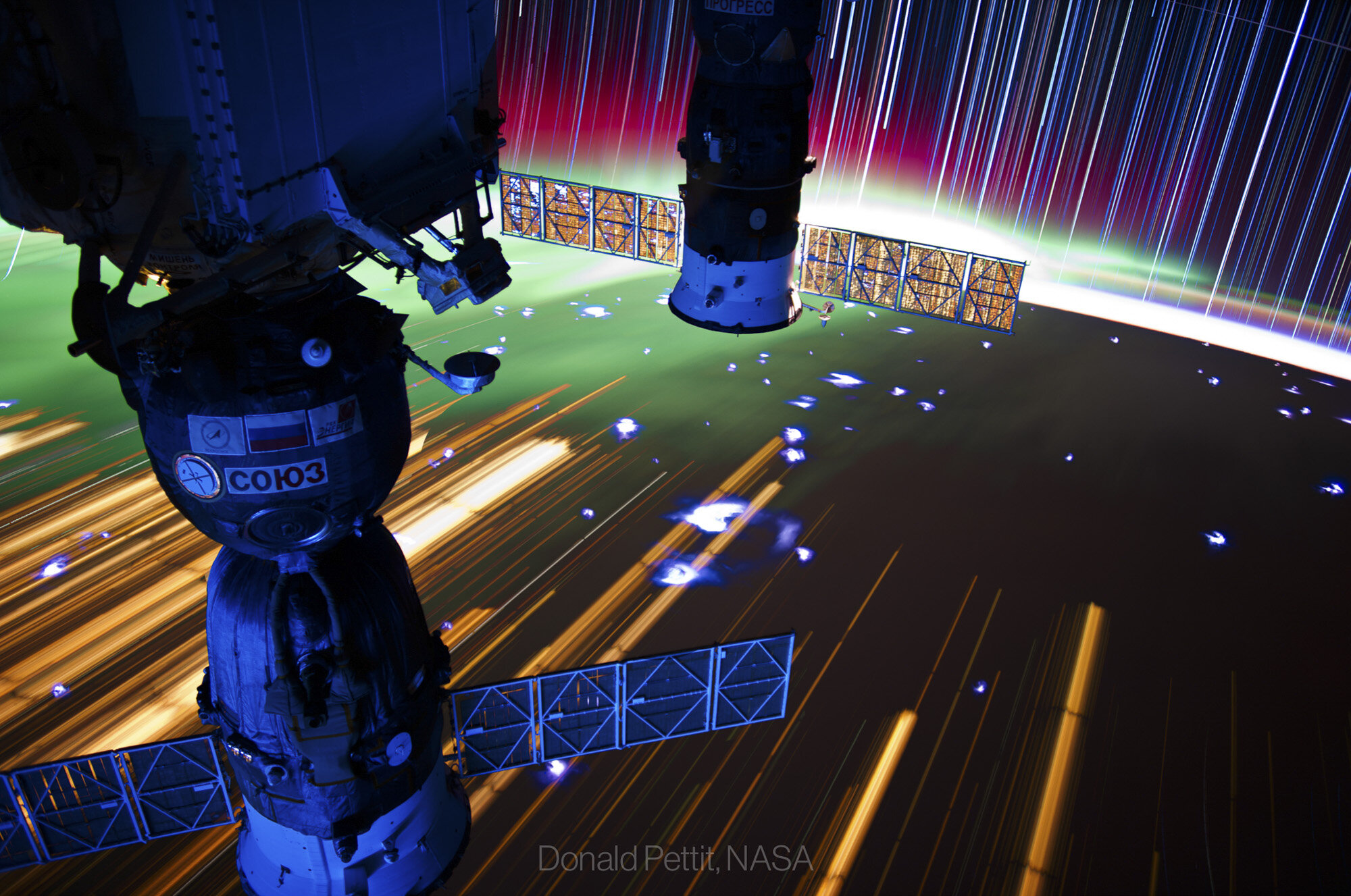
Earth horizon with sunrise, aurora, city lights, lighting, star trails, and spacecraft. Composite photo, 30 min. exposure.

Space Station truss with solar panels and support equipment.

Inside the cupola module with window shutters closed, cameras, and fabric stay light shield. Self portrait.
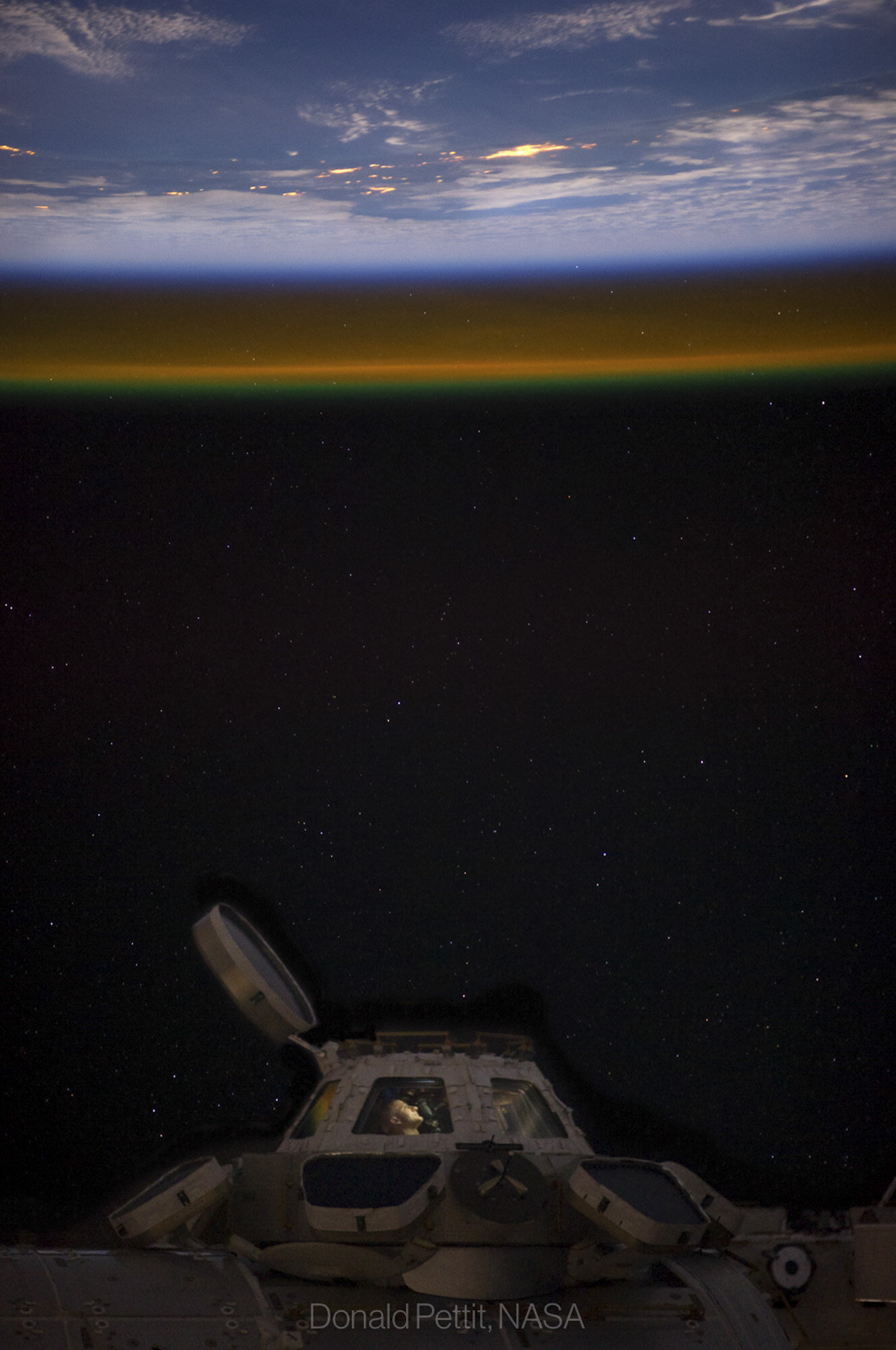
Cupola module with Earth view taken from the Russian airlock. Self portrait.
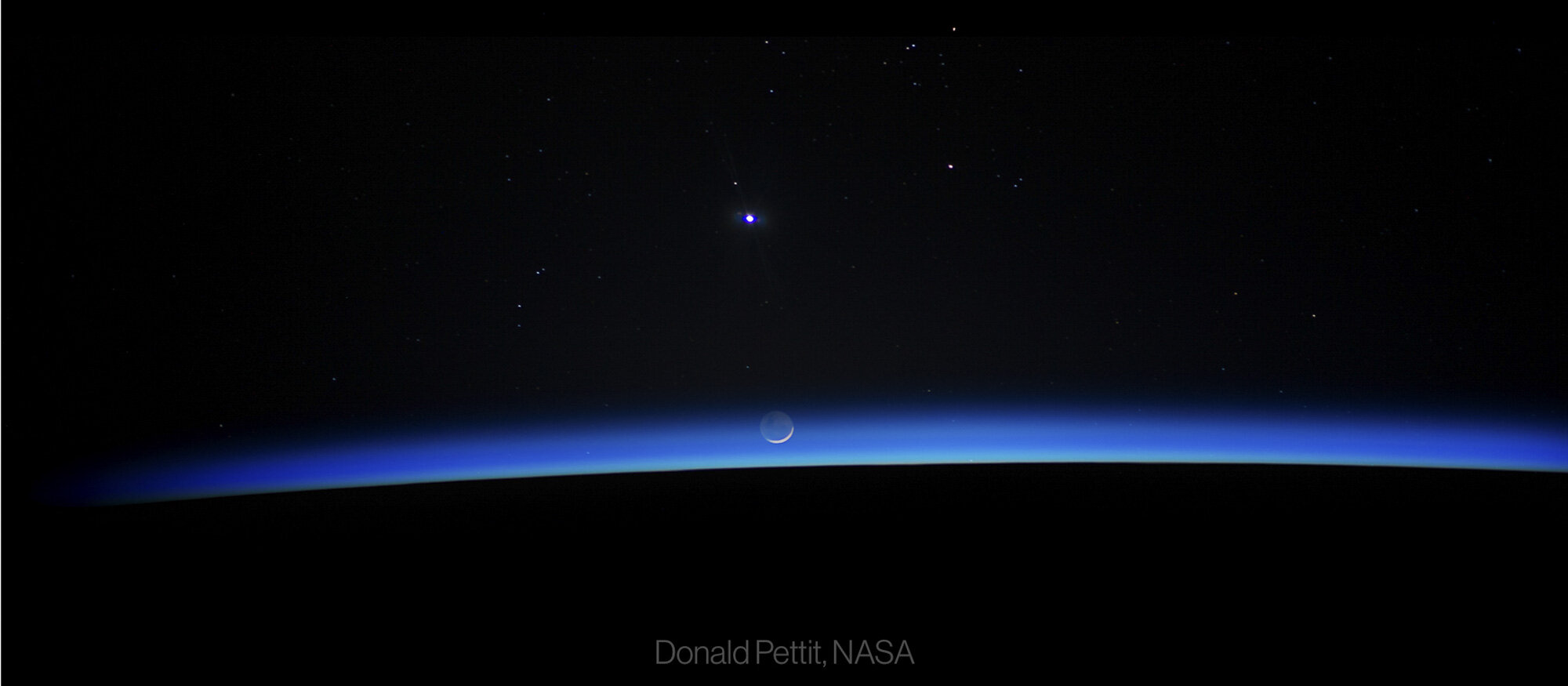
Earth horizon with waning crescent Moon, Jupiter, and Venus

Rocket thrusters firing on both the Russian Service module and the European un-crewed cargo spacecraft as they adjust alignment for docking.
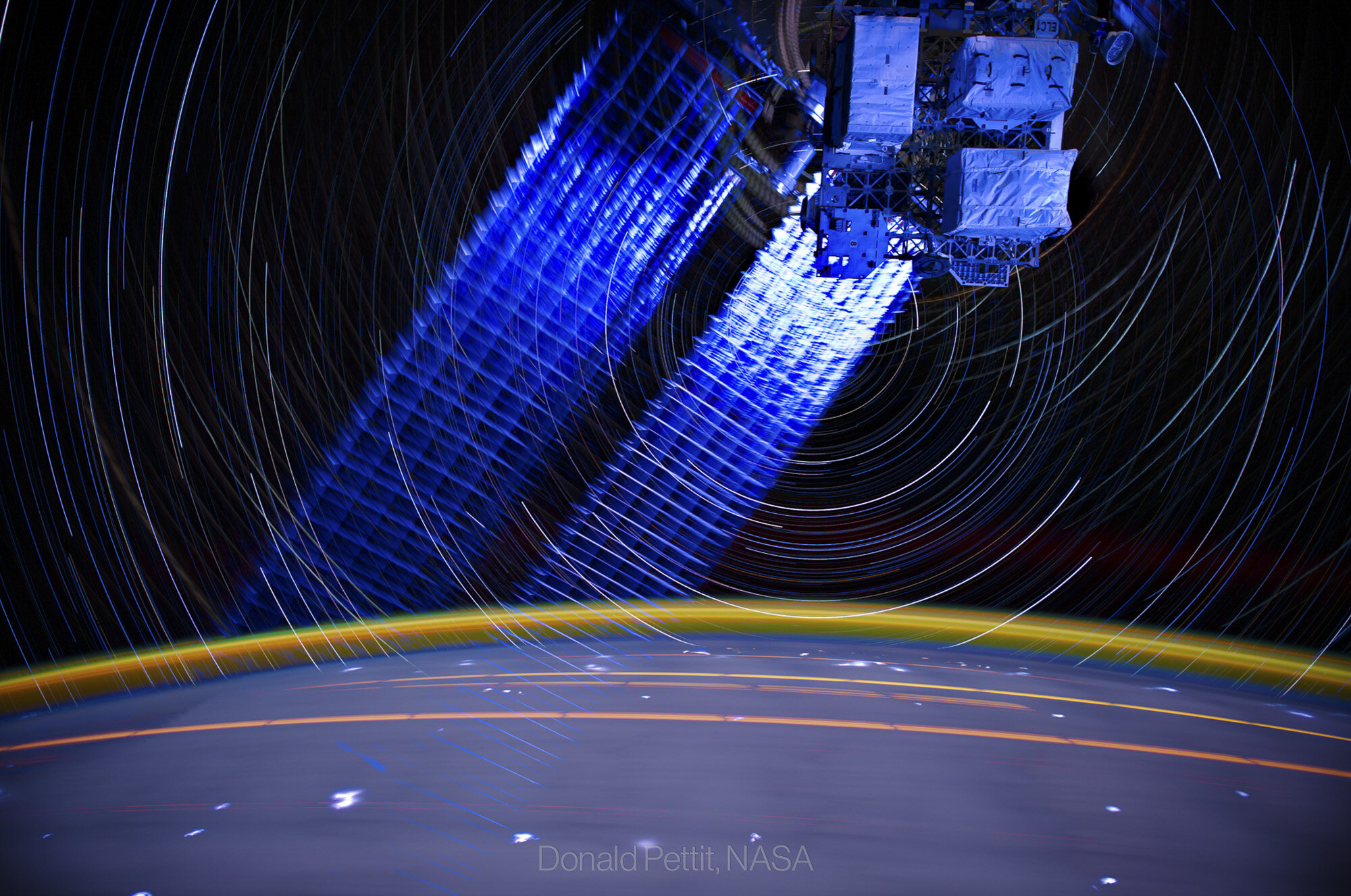
Moonlight, turned blue from scattering off Earth’s hazy atmosphere, illuminates solar panel with horizon view
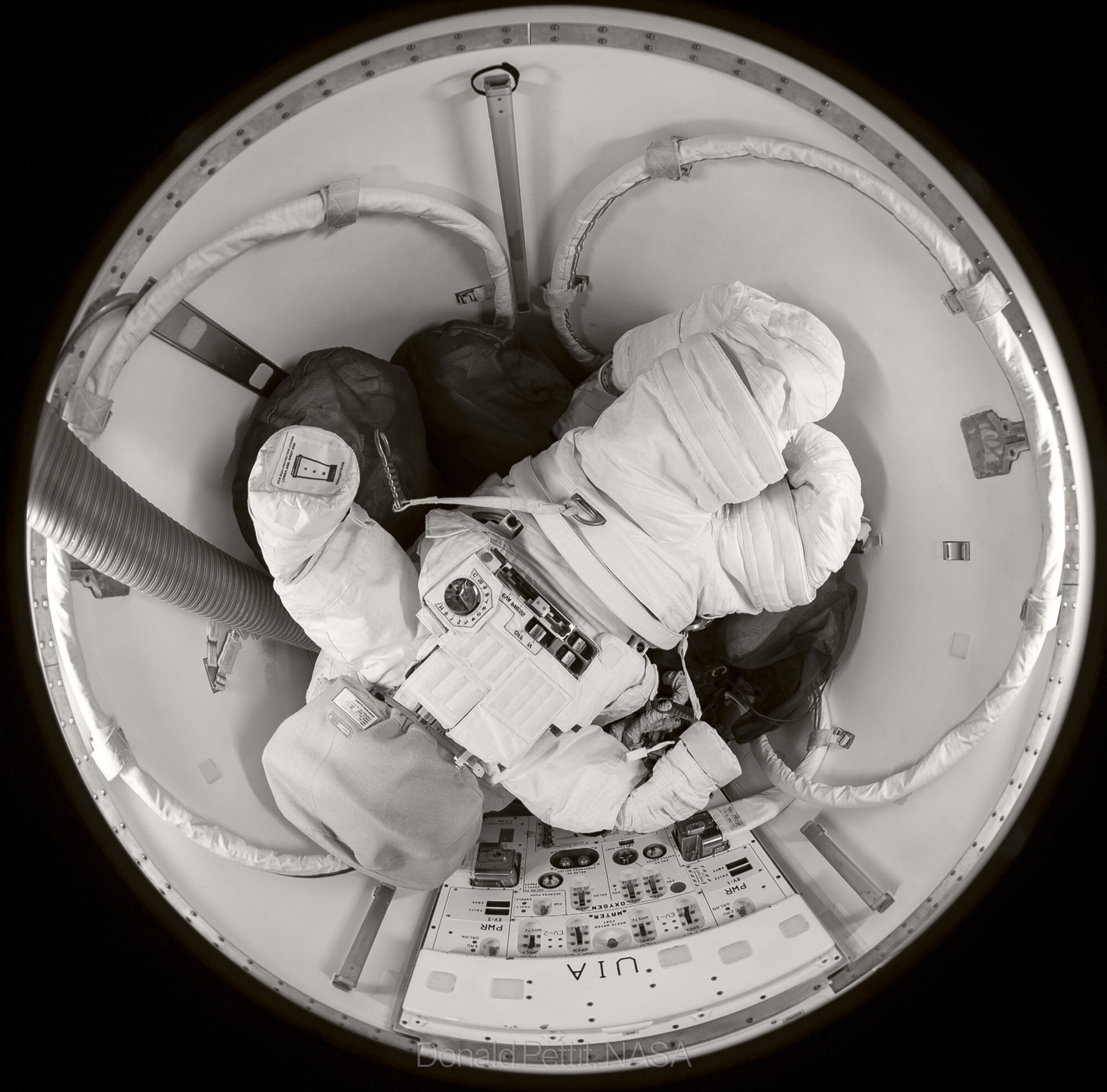
One has to dress up in the proper attire when you go outside on a stroll. Rendered in black and white.

Transit of Venus on June 5, 2012 with sunspots, seen from the International Space Station.
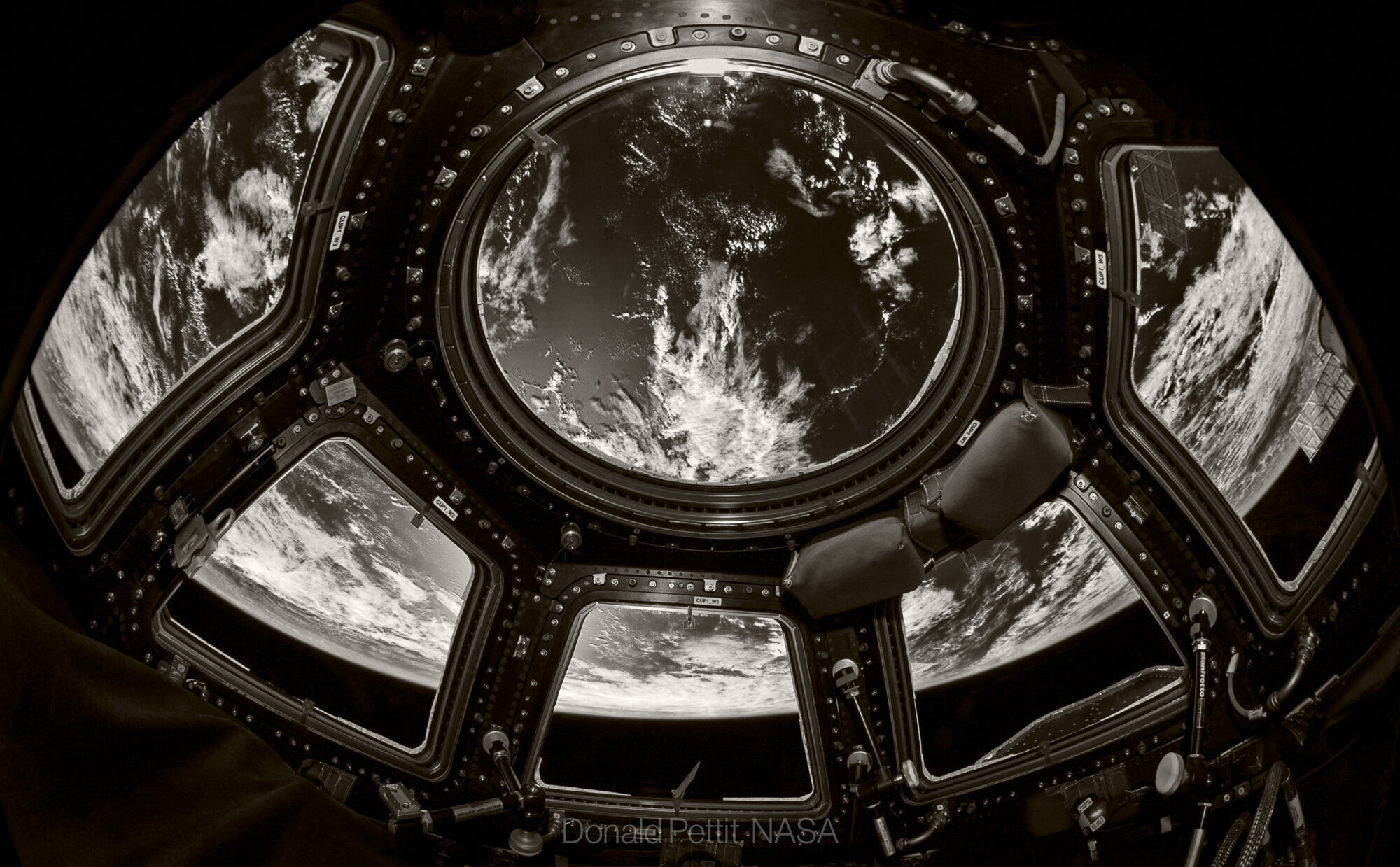
Mother Earth from the cupola. Rendered in black and white.

360-degree view of nighttime Earth showing star trails, streaking cities, lightning, and aurora. Composite exposure.
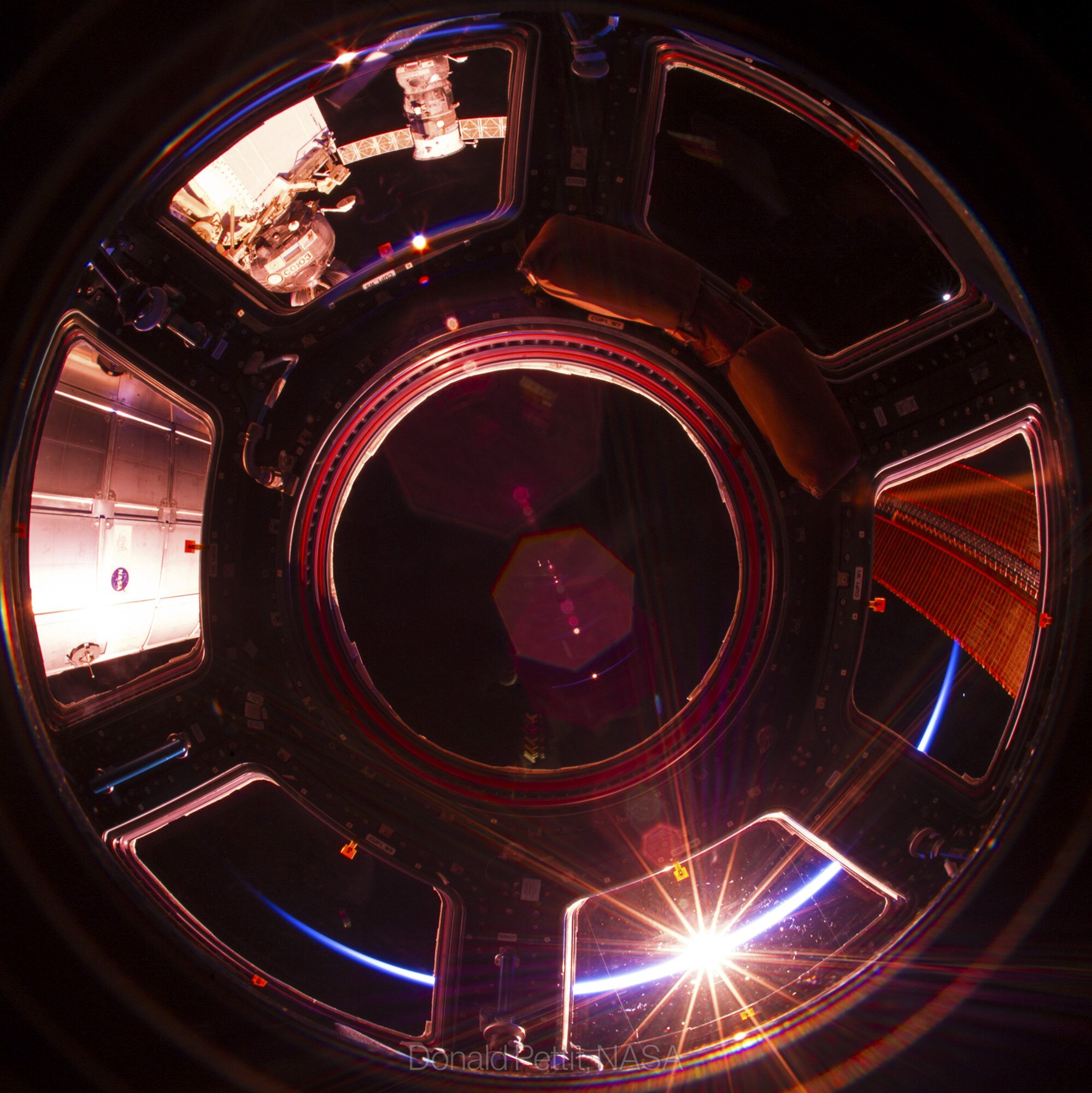
In space, brilliant red-hued sunrise happens in 7 ½ seconds instead of 2 minutes as on Earth. Orbital views shift toward red due to the longer distance the light rays travel through the atmosphere.

From space, cities at night tell a story about human expansion across planet Earth.
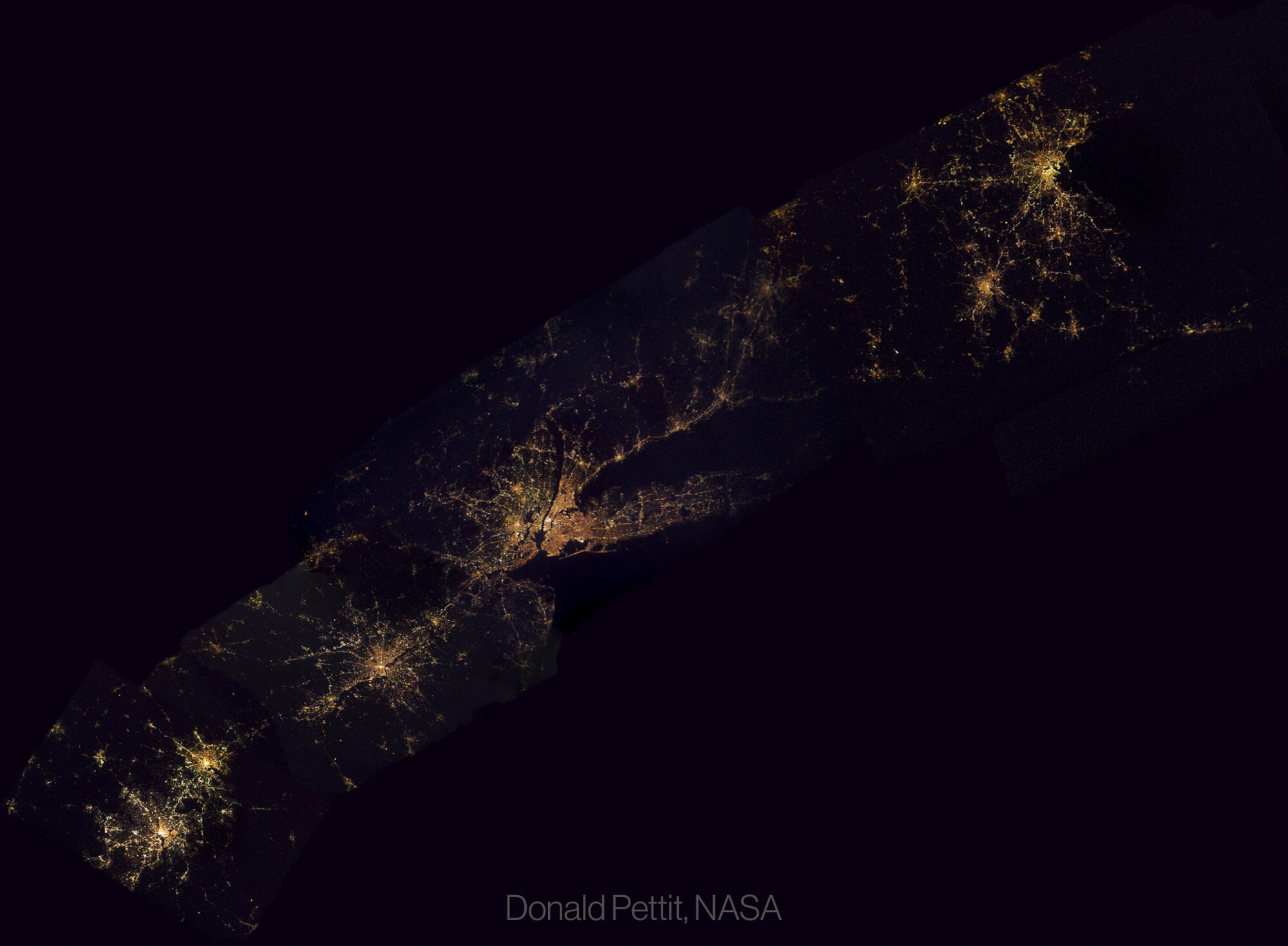
From orbit, it’s possible to see Earth on the scale of half a continent. Outlined in city lights we see all of Spain, Portugal, and the western part of the Mediterranean.
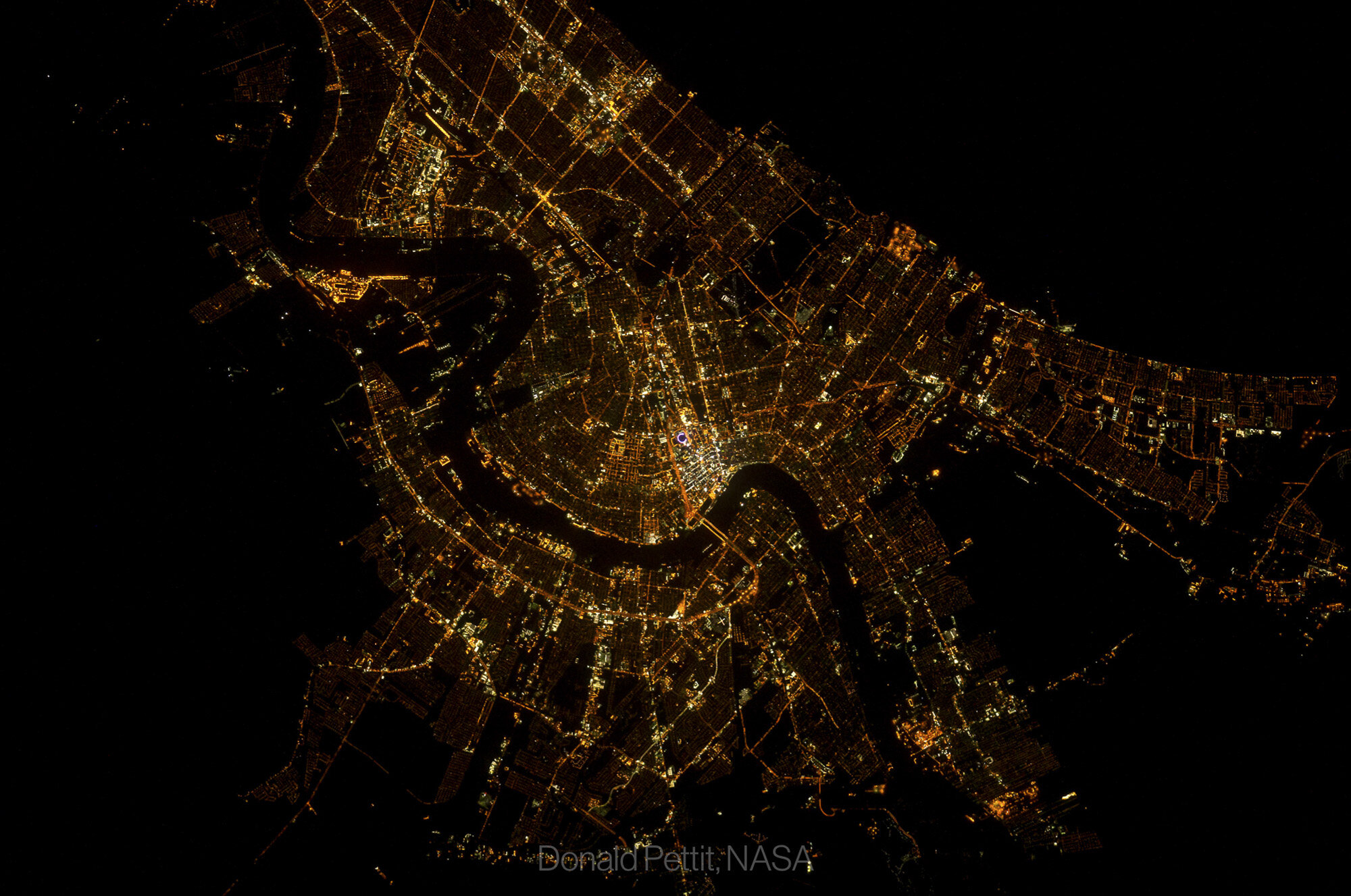
City lights tell something about the regional history. What was once a meandering trail becomes a well-lit super highway. Photograph and composition by Anatoli Ivanishin, Donald Pettit.

Mangrove forests off the coast of India. Sun glint, in a spectacular reflection, sharply delineates land from water. Rendered in black and white.

Tributaries of the Betsiboka River in Madagascar. Rendered in black and white.

Shadow from the Canadian robotic arm projected onto the Japanese module. Rendered in black and white, except for the flag of Japan.

Earth horizon with waning crescent Moon, Jupiter, and Venus.
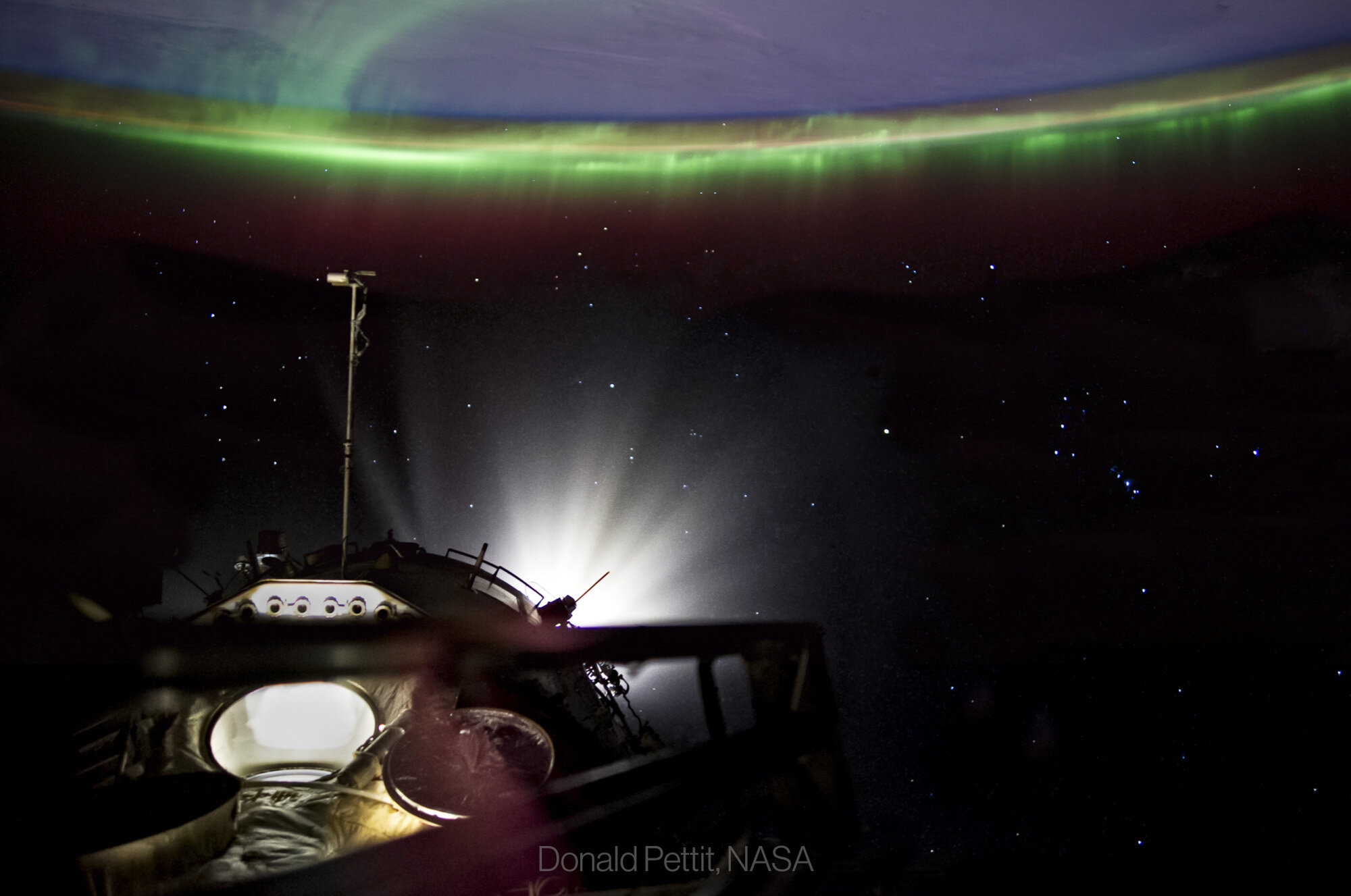
Rocket engines on Space Station fire to increase altitude lost from residual atmospheric drag. Space Station loses about 100 meters of altitude daily, requiring a re-boost about once a month. Composite exposure, 5 sec.

Fishing boats in a foggy Sea of Japan illuminate the region with xenon and LED lights.
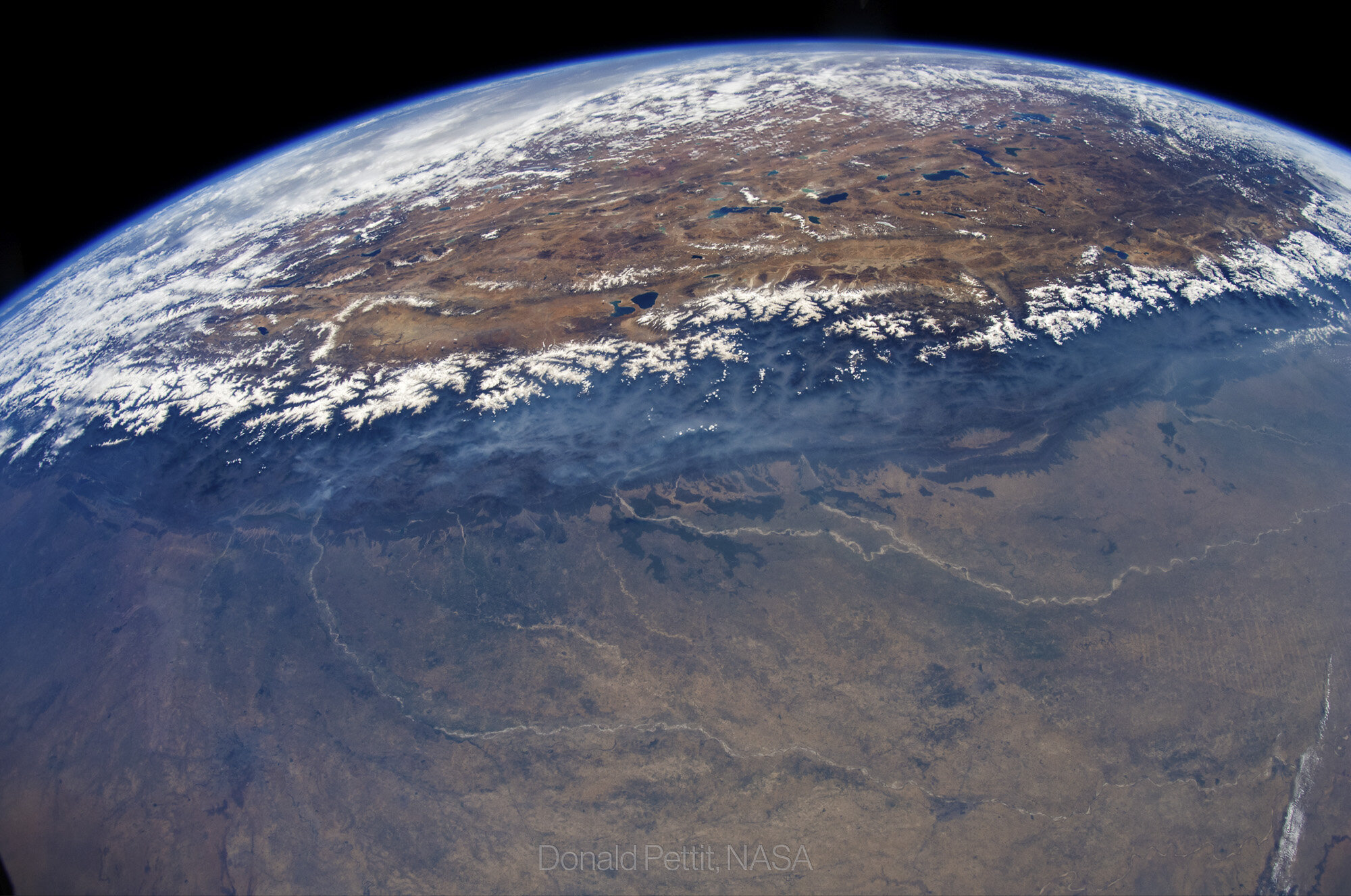
Over India looking across the Himalayas into China. Mount Everest is in this photo.
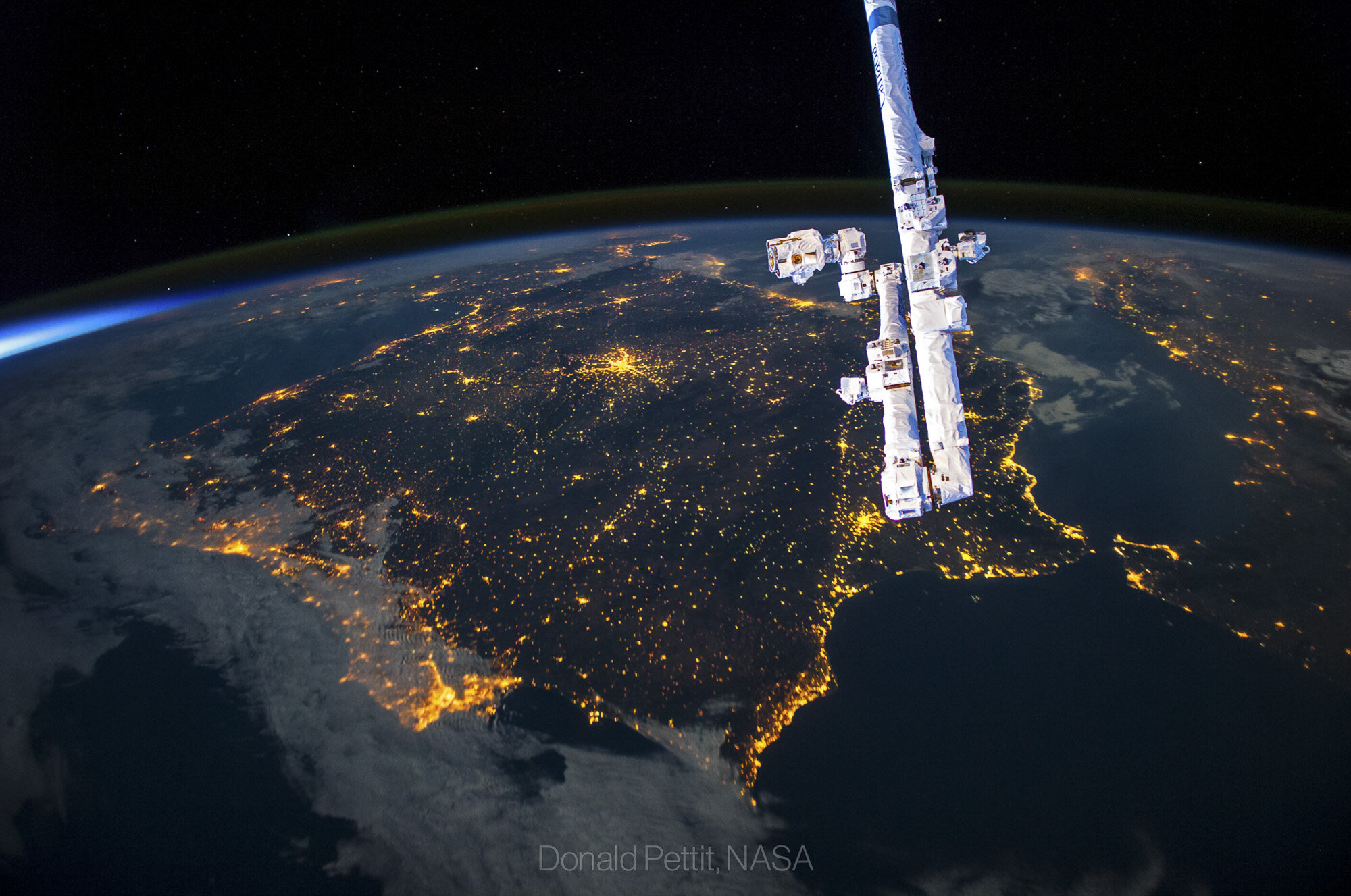
From orbit, it’s possible to see Earth on the scale of half a continent. Outlined in city lights we see all of Spain, Portugal, and the western part of the Mediterranean.
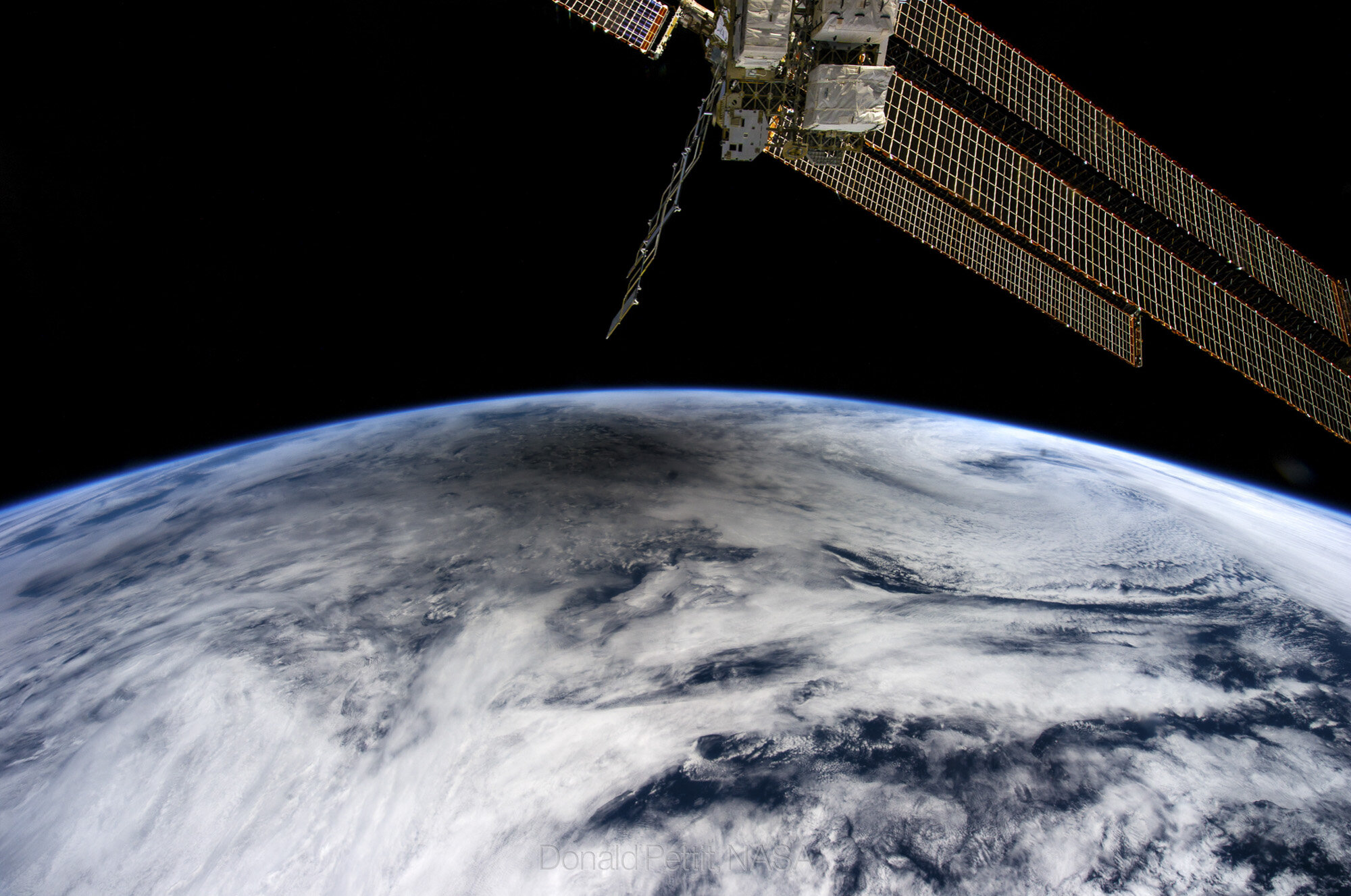
Solar Eclipse, May 20, 2012. Moon shadow projected onto ocean clouds east of Kamchatka with solar panel.
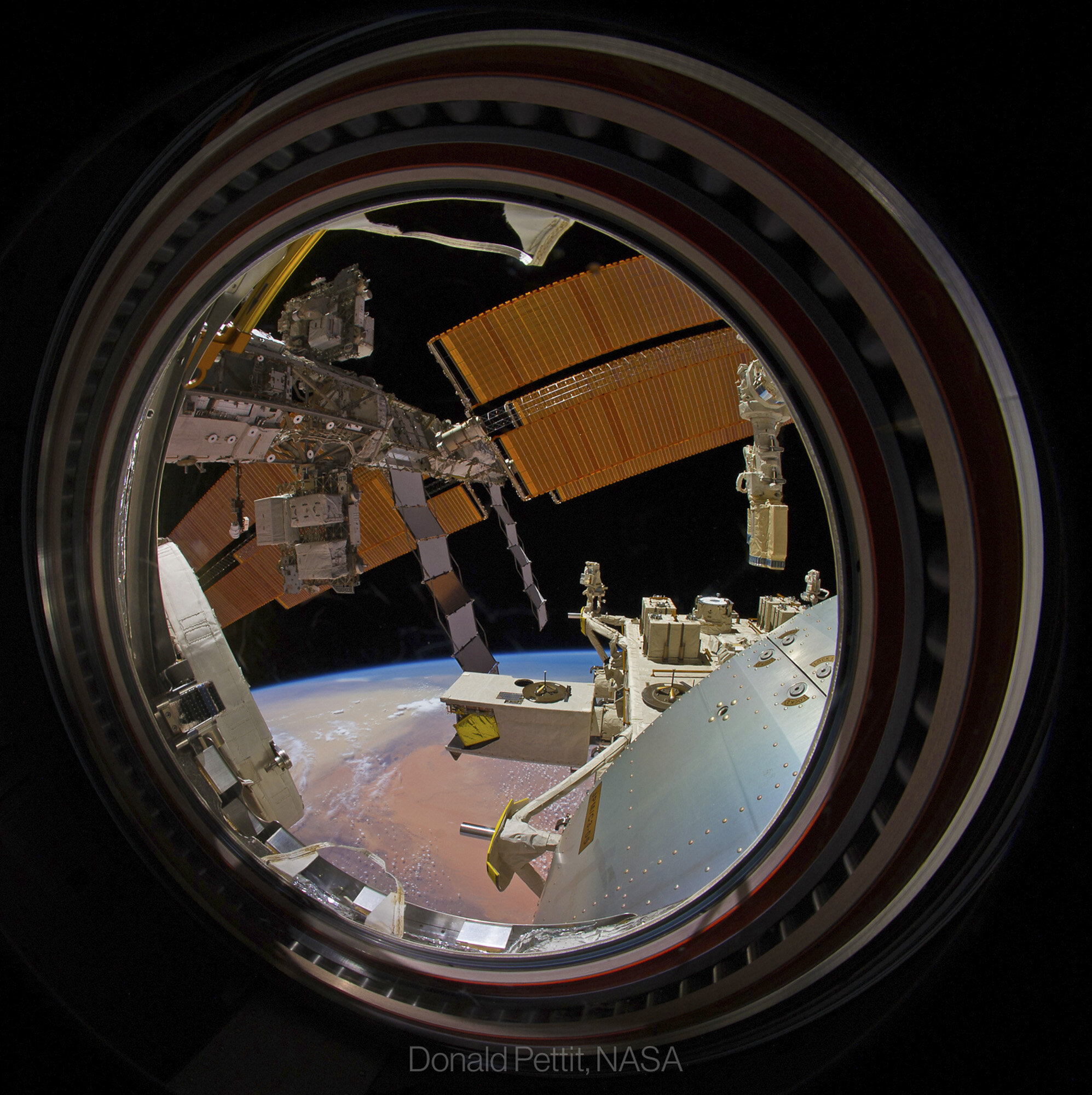
Daytime view from the Japanese module.
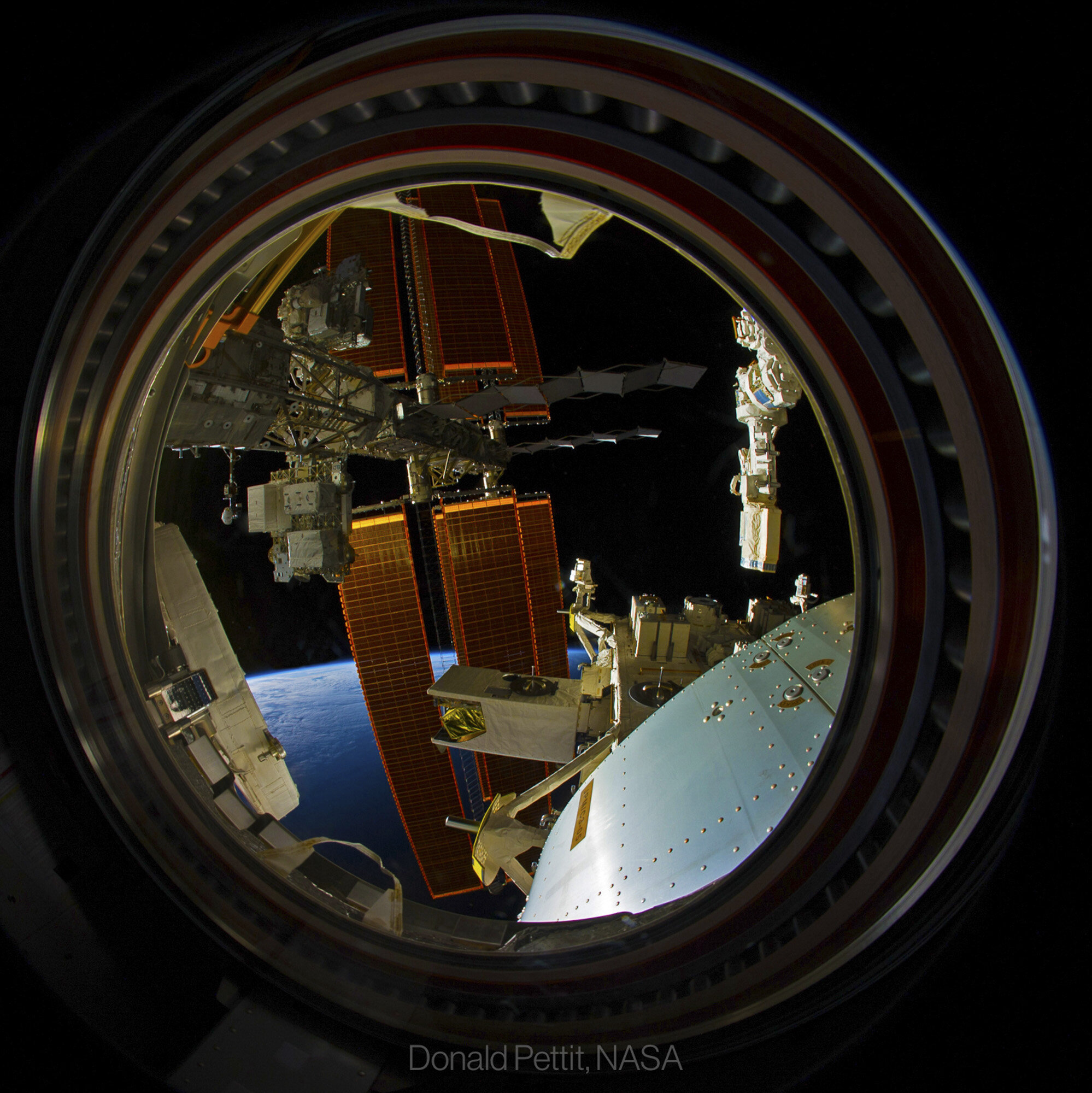
Nighttime view from the Japanese module.
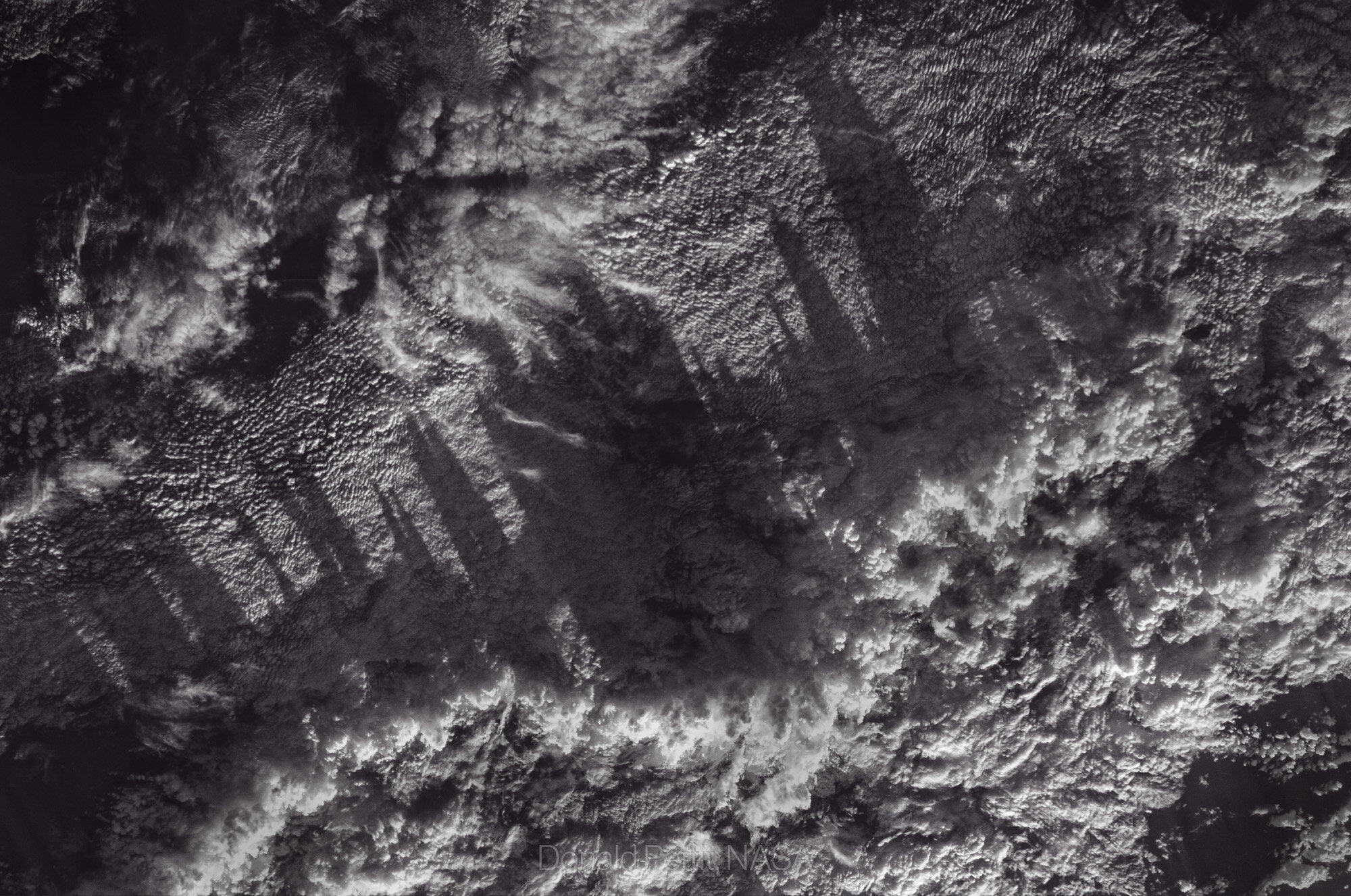
A line of thunderheads projects a cityscape shadow on lower cloud cover. Rendered in black and white.
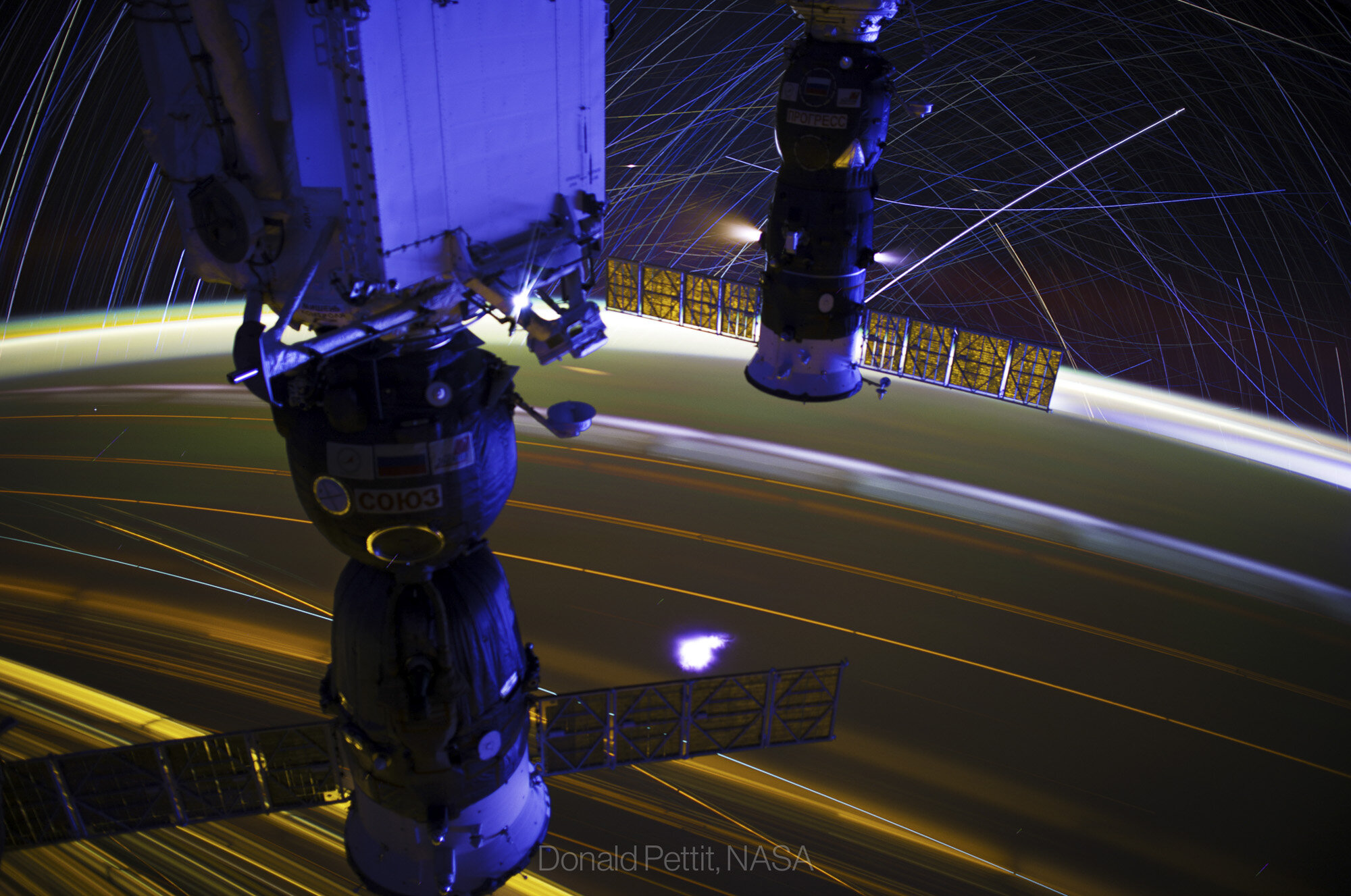
Star trails and streaking city lights show strange trajectories caused by changes in orientation during rocket thruster firings. Composite exposure, 30 min.
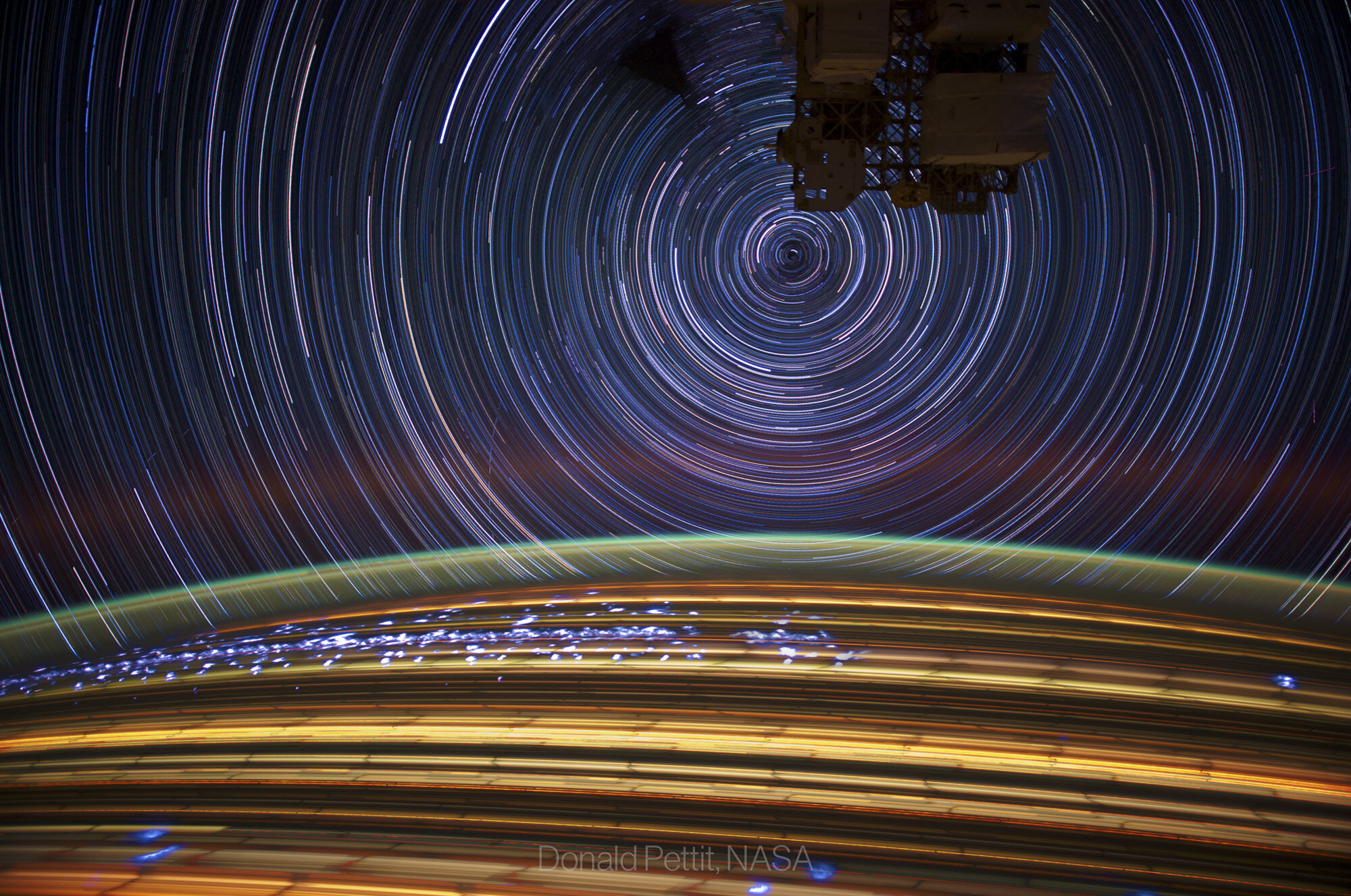
Space Station motion during a time exposure produces circular star trails. Cities show as streaks on the Earth’s surface. The atmosphere glows green at the horizon. Lightning from a single storm shows its progression over time. Composite exposure, 30 min.
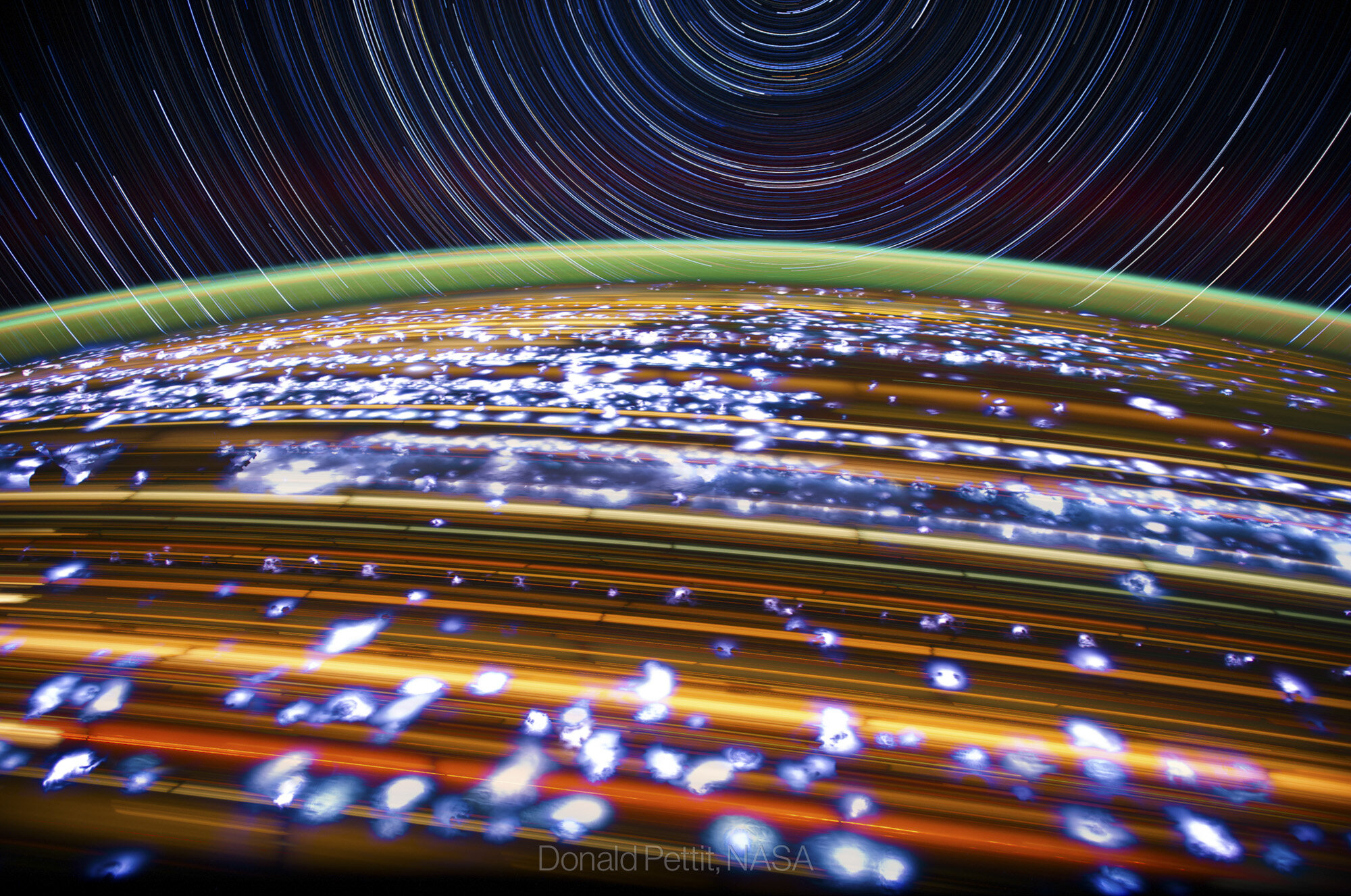
Flashing bolts of lightning send messages into space under a green atmospheric glow. Composite exposure, 30 min.
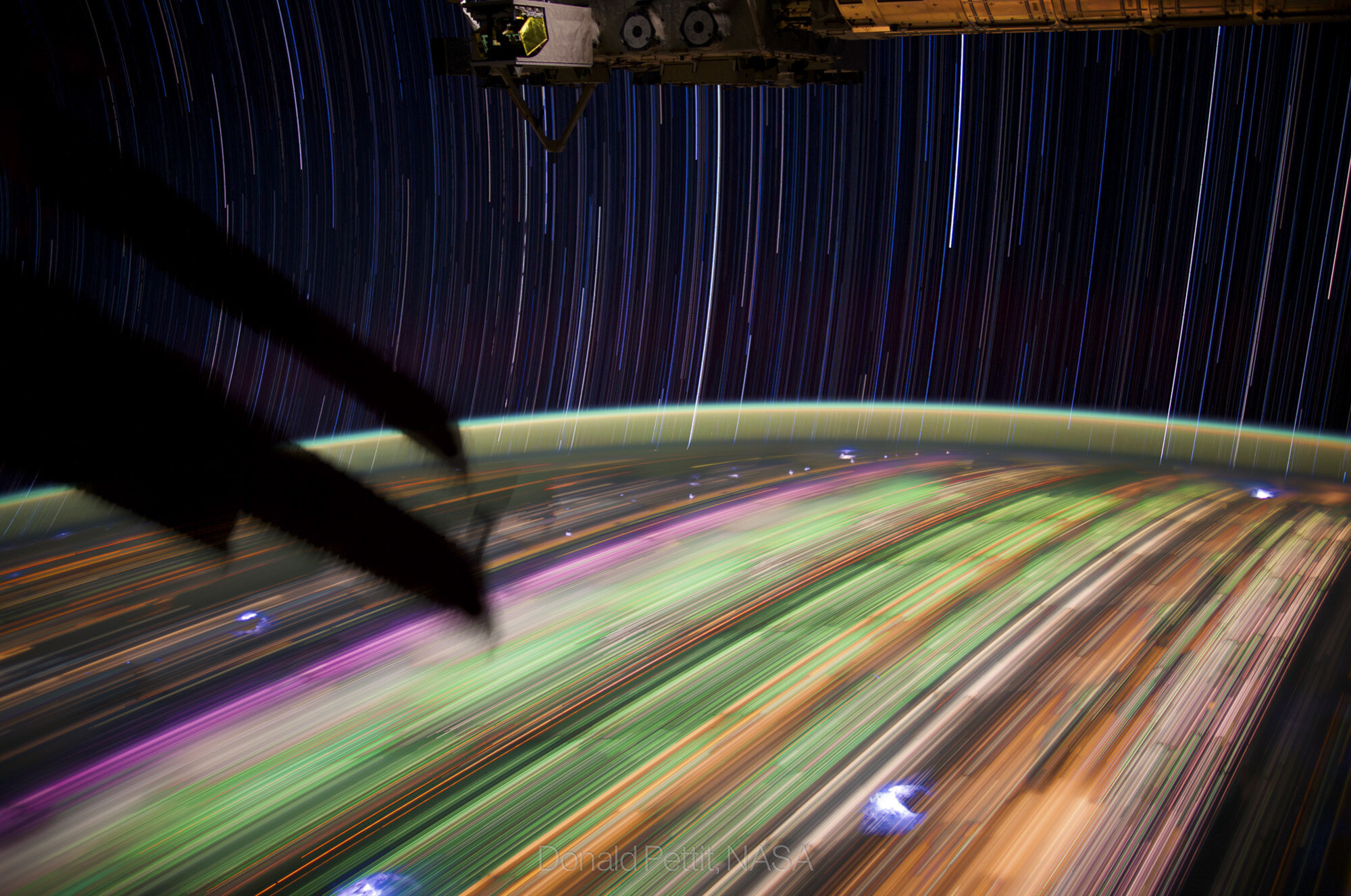
LED lighting creates candy colored cities that streak by at orbital velocities. Composite exposure, 30 min.

Momentary flash reflected from an Iridium Communications satellite seen through the green atmosphere. Streaking lights from oil platforms off the coast of the Falkland Islands. Triangular shadow of the cupola module (where I took this photograph) is projected on the Japanese module at the moment of sunrise. Composite exposure, 30 min.

When in space, wing-like radiators dissipate heat from electricity generated by the solar panels. Strong atmospheric airglow, driven by solar electrons, produces a yellow-green Earth. Hovering above is a faint red glow from the upper atmosphere. Composite exposure, 30 min.

Purple haze, caused by atmospheric nitrogen when illuminated by sunlight. It is only seen near dawn and dusk. Composite exposure, 30 min.

Mount Kilimanjaro, Tanzania in near-infrared. Vibrant vegetation appears magenta, showing temperate forests in a ring zone from low-lying savannah up to the timberline.
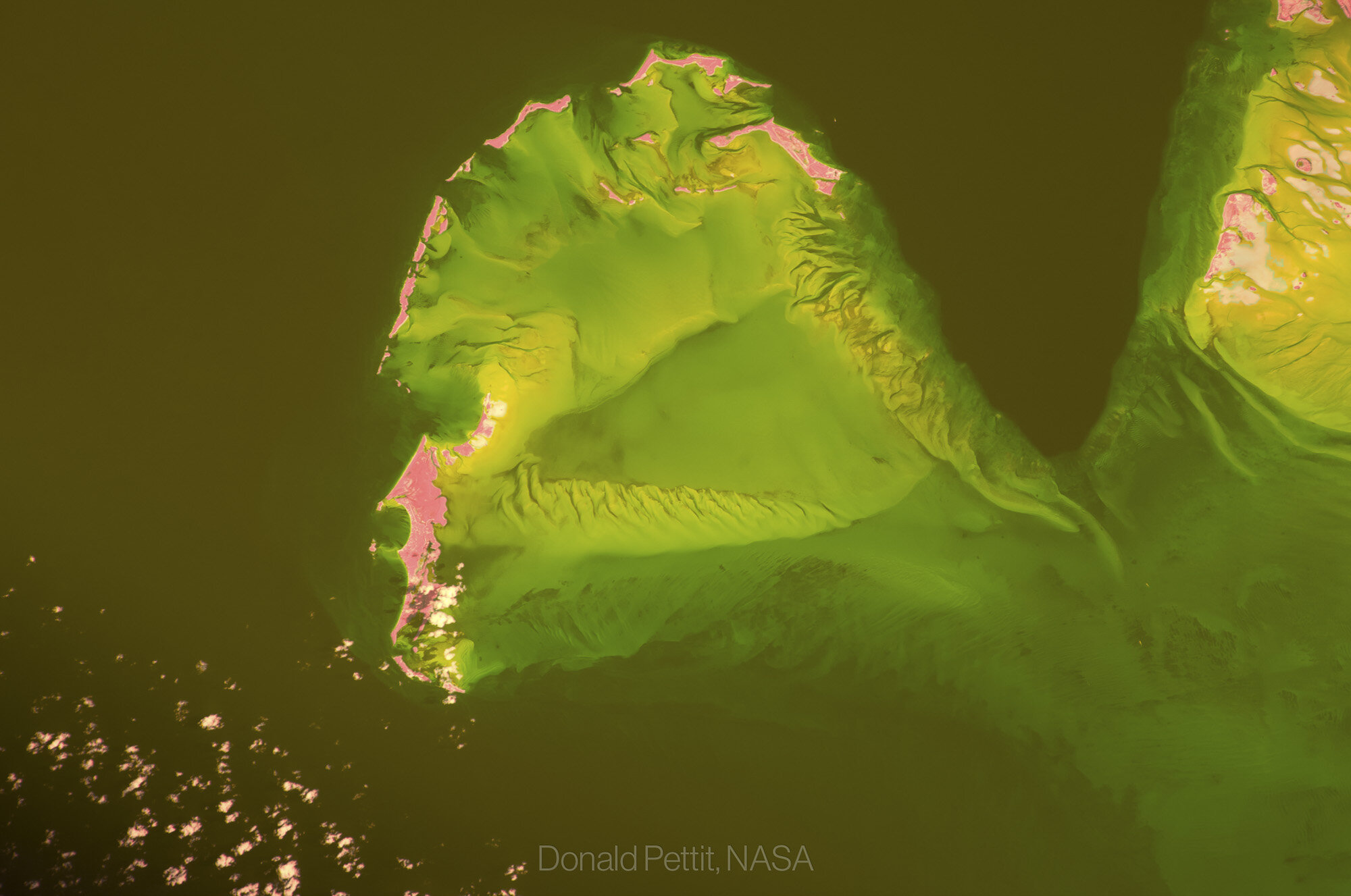
The Bahamas in near-infrared. Islands are highlighted in pink-magenta from vegetation. Coral and turquoise water appear as eerie yellow-green.
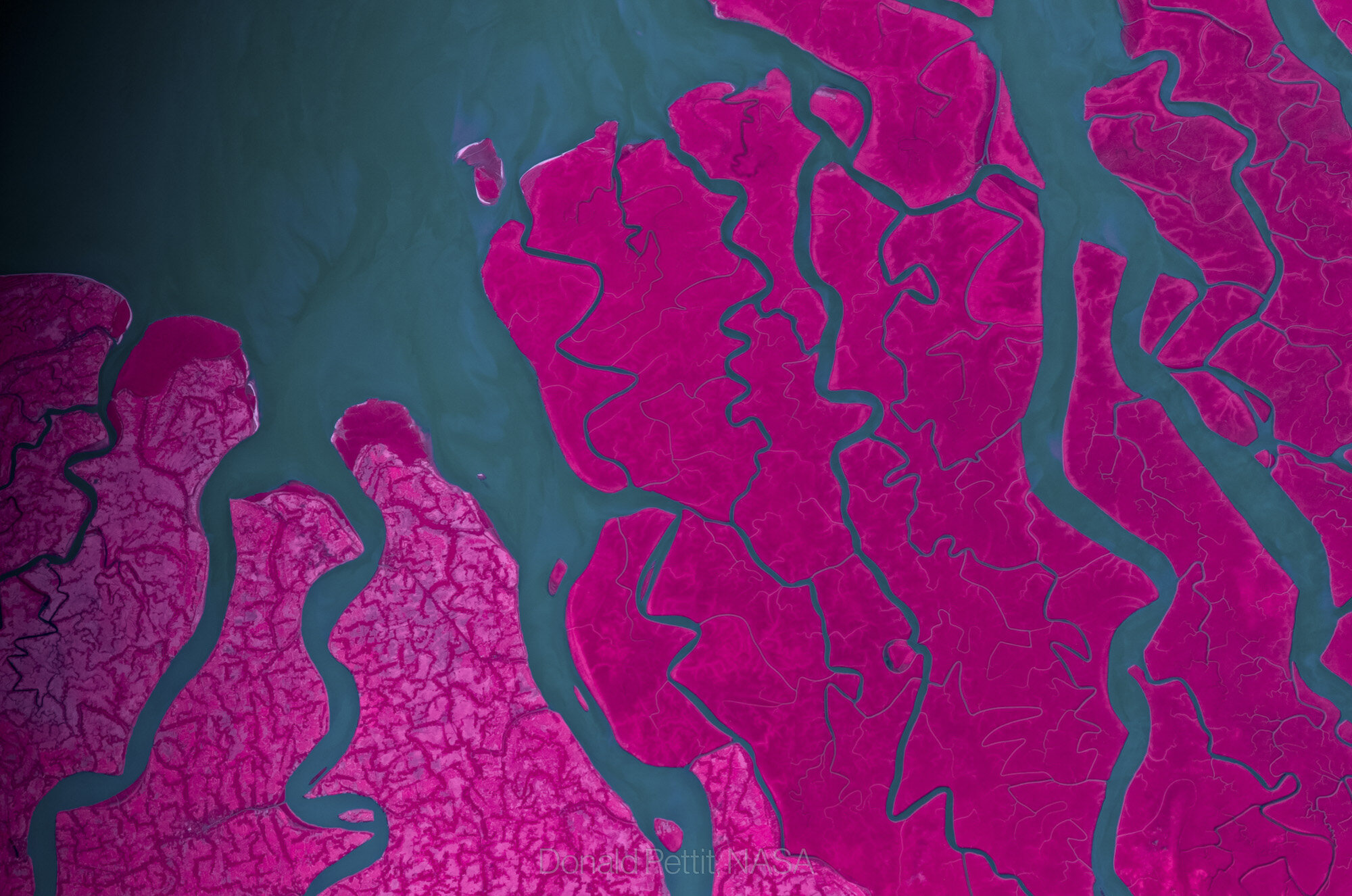
Ganges River Delta in near-infrared showing lush mangrove forests in Matisse-like colors. Encroaching agriculture is seen in pink.
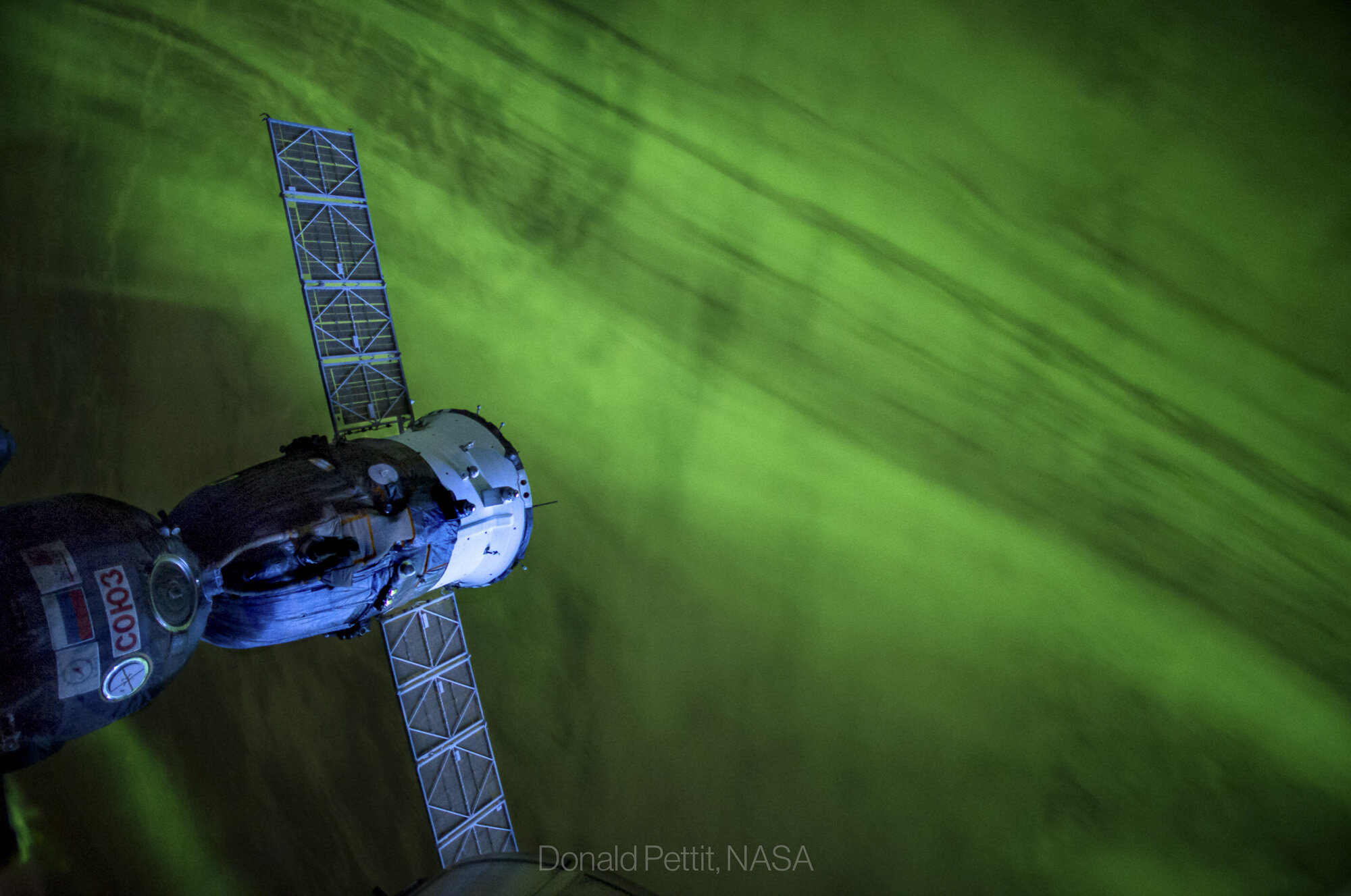
Space Station flying above a river of green aurora.

Solar panel on the Russian Soyuz spacecraft consists of individual scale-like cells that reflect an iridescent blue. Finger-like appendage is a high-gain antenna.

